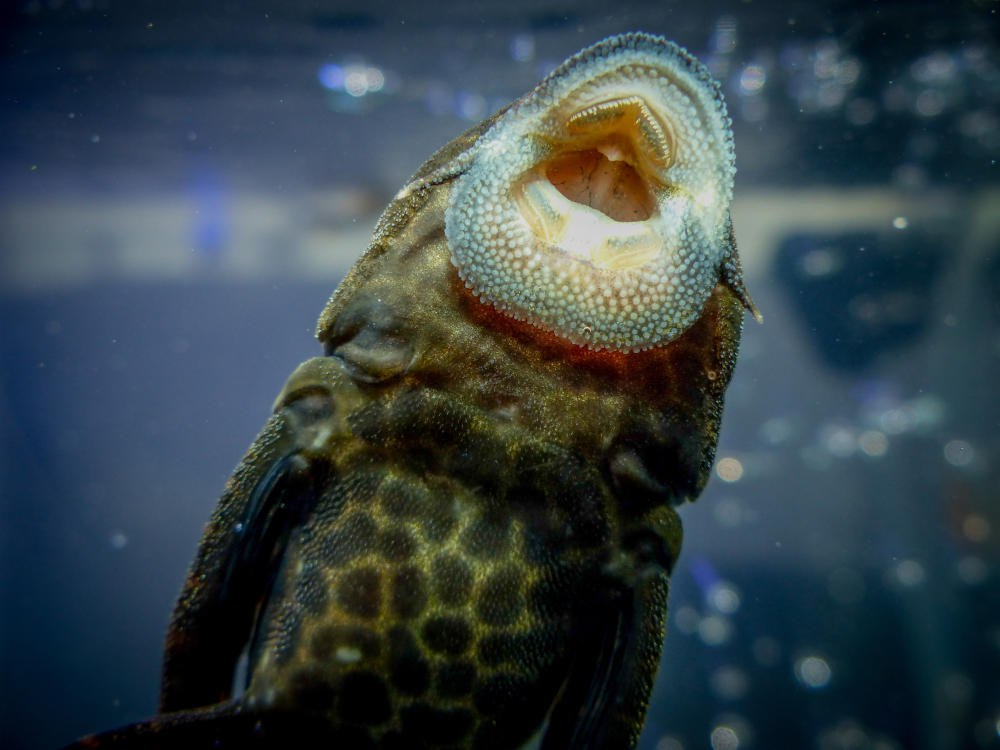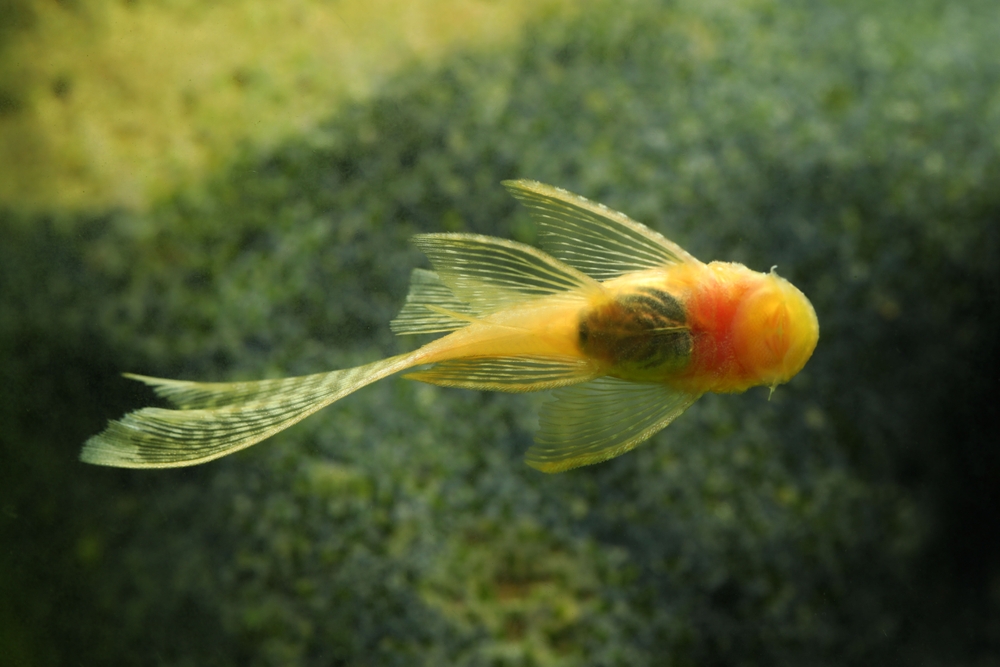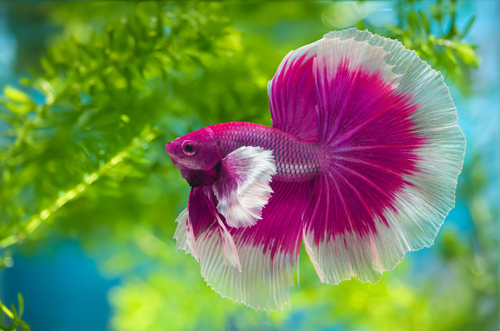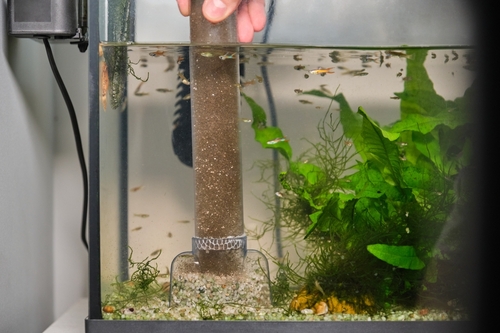Aquarium enthusiasts often contemplate whether betta fish, known for their vibrant colors and dynamic personalities, can peacefully coexist with other tank mates, such as the plecostomus or “pleco.” A common query emerges: is it safe to house these two species together, or could a betta inflict harm upon a pleco?
While betta fish do have a reputation for being territorial and occasionally aggressive, plecos are typically seen as suitable companions due to their armored bodies and peaceful nature.
However, to increase the likelihood of a harmonious environment, the aquarium setup and conditions must be carefully managed. This includes providing adequate space, hiding spots, and monitoring the behavior of the betta towards its tank mates.
Understanding both the betta’s and the pleco’s needs and traits is crucial in fostering a safe and stress-free shared habitat, ensuring the health and well-being of both fish.
Contents
Key Takeaways on Will a Betta Kill a Pleco?
- Betta fish can be aggressive, but plecos are generally good companions.
- Proper tank conditions and space are vital for cohabitation.
- Understanding both species’ behaviors and needs is essential for a peaceful aquarium.
Don’t miss out on these other top picks:
- Why Is My Betta Fish Not Eating?
- Neon Tetras with Betta: Can They Coexist Peacefully in Your Aquarium?
- Can Guppies Eat Betta Food?
Understanding Betta Fish Behavior
When delving into the intricacies of Betta fish behavior, it’s crucial to acknowledge their natural inclination for aggression and their unique social dynamics within a community tank setting.
Aggression and Territory
Bettas, also known as Siamese fighting fish, display a strong territorial instinct, especially among males. A male Betta will often establish a territory and defend it vigorously.
Aggression can manifest through flaring gills, spreading fins, and even engaging in physical combat with intruders. While this behavior is instinctual, it can be exacerbated in confined spaces where hiding spots and room to roam are scarce.
Social Interaction with Tank Mates
When it comes to social interactions, Betta fish are solitary creatures. In their natural habitat, they may tolerate other species, yet in the confines of a home aquarium, selecting compatible tank mates is critical. Bettas can coexist with non-aggressive, dissimilar fish that do not encroach on their territory.
However, the Betta’s temperament can vary, and some may tolerate companionship better than others. It’s essential to monitor their behavior closely to ensure harmonious interactions.
Plecostomus Species Overview

The plecostomus, commonly known as pleco, encompasses a vast array of species, each with unique traits and requirements that distinguish them in the world of freshwater aquariums.
Diverse Pleco Profiles
Plecos belong to the family Loricariidae, which is renowned for its diversity. With over 150 genera and nearly 700 species, these bottom-dwellers present a complexity of forms, sizes, and behaviors.
Clown plecos, for example, are one of the smaller variants, growing only to about 3.5-4 inches, making them suitable for more modest tank sizes. Zebra plecos are highly sought after for their striking striped pattern but require well-oxygenated water and tend to be more reclusive.
Common Pleco Types for Aquariums

Within the wide pleco family, certain species are more commonly found in aquariums due to their adaptability and appealing appearance. The Common pleco is a well-known example, often purchased for algae control.
However, their massive adult size, reaching up to 24 inches, should be carefully considered before introducing them to a home aquarium. On a smaller scale, the Bristlenose pleco enjoys popularity for its distinctive facial ‘bristles’ and more manageable adult size of around 5 inches. It’s also favored for its robustness and tenacity in various water conditions.
When selecting a pleco species, consider factors such as tank size, water parameters, and the specific requirements of each species to ensure a thriving aquatic environment.
Tank Environment and Habitat

Creating a suitable aquatic environment is crucial for the coexistence of betta fish and plecos. I’ll discuss how aquarium size, water conditions, and habitat decorations directly impact the harmony between these species.
Aquarium Size and Space
For a betta and pleco to cohabit peacefully, I recommend a tank no smaller than 20 gallons. This provides sufficient room for both species to establish their territories. Plecos, being bottom dwellers, need space to roam along the substrate, while bettas prefer the mid to upper sections of the water column.
- Minimum tank size: 20 gallons
- Bettas’ preferred space: Mid to upper water column
- Plecos’ preferred space: Bottom substrate
Water Conditions and Quality
The water parameters should be consistently maintained to accommodate both species’ needs:
| Water Parameters | Bettas | Plecos |
| Temperature | 76-81°F (24-27°C) | 72-82°F (22-28°C) |
| pH Level | 6.5-7.5 | 6.5-7.5 |
| Water Hardness | 3-4 dGH | 3-12 dGH |
Regular monitoring and maintenance of these parameters will prevent stress and potential aggression in both fish.
Hiding Places and Decorations

The right tank decorations and vegetation can significantly reduce aggression. For bettas, tall plants and floating decorations allow them to rest and establish personal space. Plecos appreciate hiding places like caves and driftwood, which also aid in their natural algae-eating behavior.
- For Bettas:
- Tall plants
- Floating decorations for resting
- For Plecos:
- Caves
- Driftwood for grazing on algae
By furnishing the aquarium with these elements, you will create distinct zones for both bettas and plecos, ensuring each fish can escape to its own safe area when needed.
Compatibility and Interspecies Interaction
Understanding the behavioral tendencies and compatibility between species such as bettas and plecos is crucial for a harmonious aquarium environment.
Behavioral Compatibility
Bettas are known for their striking colors and sometimes aggressive nature, particularly among males. Plecos, on the other hand, tend to be more peaceful and are often seen as bottom-dwellers that focus on algae cleaning.
It’s essential to assess behavioral compatibility which hinges on whether both species can coexist without stress or confrontation.
- Bettas: Typically territorial, may exhibit aggressive behavior like fin nipping.
- Plecos: Generally peaceful, may keep to themselves if given enough space.
Peaceful vs. Aggressive Tank Mates
When I advise on tank mate selection, I emphasize that peaceful tank mates are preferable for bettas to prevent triggering their aggressive instincts. Plecos, being peaceful by nature, usually should not provoke bettas:
- Tank Size: A larger tank can reduce possible betta aggression towards plecos.
- Hiding Spots: An abundance of hiding spaces can help plecos avoid any aggressive encounters with bettas.
In assessing potential risks, indicators suggest that while plecos are typically non-confrontational, there is a risk of bettas harming plecos if aggressive behavior is present. Ensuring that each fish has its own territory and that the betta is not prone to nipping can decrease chances of conflict.
Feeding and Nutrition
Understanding the dietary needs of both Bettas and Plecos is critical to maintaining a harmonious aquarium. I’m going to detail their unique nutritional requirements and the feeding practices that can support the health of each species when they are tank mates.
Dietary Needs of Bettas and Plecos
Bettas are carnivorous and thrive on a high-protein diet. They require foods like bloodworms and brine shrimp to meet their nutritional needs. It’s important to feed them appropriately sized portions to prevent overfeeding.
On the other side, Plecos are largely omnivorous, feasting mainly on algae, and they can benefit from algae wafers as well as occasional fresh vegetables. Their diet helps them fulfill their role as tank cleaners, keeping the environment free from excess algae.
Feeding Practices for Tank Mates
When feeding Bettas and Plecos in the same tank, timing and food placement are key. For Bettas, I like to feed them at the water’s surface where they naturally eat. For Plecos, I drop the algae wafers or vegetables near their hiding spots to ensure they get their share.
It’s crucial to ensure that the Pleco receives food since Bettas might outcompete them if not monitored. Regular feeding times help maintain a routine, making it less stressful for both fish and easier for me to monitor their intake.
Ensuring Health and Well-being
The key to harmonious living between betta fish and plecos hinges on monitoring their well-being while maintaining a pristine tank environment. Addressing signs of stress promptly and keeping the tank clean are vital for the safety and health of both species.
Recognizing Signs of Stress
Fish showcase stress in various ways, which can lead to conflict if not managed correctly. For bettas, signs of stress include fin clamping and frequent hiding. Plecos, on the other hand, might try to escape the tank or display reduced activity levels. Here’s what to watch for:
- Bettas:
- Clamped fins
- Excessive hiding
- Loss of color
- Aggressive swimming
- Plecos:
- Attempts to jump out
- Inactivity or lethargy
- Hiding during feeding times
Addressing these symptoms promptly can prevent the escalation of stress that may lead to aggression between tank mates.
Maintaining Tank Cleanliness

A clean tank reduces the risk of disease and stress, thereby minimizing potential for conflict. Regular water changes and substrate cleaning are part of my routine. For clarity, here’s a simplified schedule I follow:
- Weekly Tasks:
- Check filter media and rinse if needed
- Vacuum substrate to remove waste
- Replace 20-25% of the water
- Monthly Tasks:
- Inspect equipment for proper function
- Clean tank decorations to prevent algae buildup
Planning for Cohabitation
In my experience with aquariums, ensuring the peaceful coexistence of fish species involves careful selection of compatible tank mates and proper introduction strategies.
Selecting Appropriate Tank Mates
For a community tank housing bettas and plecos, species compatibility is crucial. Opt for tank mates based on temperament, size, and environmental needs. Bettas are generally territorial and can display aggression, particularly males. In contrast, plecos are typically peaceful bottom dwellers.
But even among plecos, size and species matter; smaller, less aggressive plecos like the Bristlenose pleco are often a better choice. The key here is to ascertain that the tank mates have similar water and space requirements but different areas of territory within the tank to minimize confrontations.
Strategies for Successful Introduction
When introducing a betta and a pleco, do it slowly to monitor their interaction. At first, ensure the aquarium is well-prepared with ample hiding spots like caves or dense plants to provide refuge and establish territories. Here’s a brief step-by-step guide:
- Prepare the tank with separate hiding places and varying levels of plantation.
- Introduce the pleco to the tank first to allow it to establish its territory at the bottom.
- After some time, introduce the betta, preferably using a partition to allow visual contact without physical interaction.
- Observe their behaviors closely over a few days.
Successful cohabitation largely depends on the individual temperaments of the fish, but with these practices, I’ve seen many instances where bettas and plecos live together harmoniously.
Frequently Asked Questions
In this section, I’ll address common inquiries regarding the cohabitation of betta fish and plecos. Understanding compatibility, aggression prevention, and ideal tank conditions is vital for a harmonious aquarium.
Are betta fish and common plecos compatible tank mates?
Bettas and common plecos can share a tank if the size and conditions are suitable. Both species thrive in clean water and can adapt to similar pH levels, making them compatible tank mates.
Is it safe for a clown pleco to cohabit with a betta fish?
Clown plecos and bettas can safely cohabit as long as the environment is stress-free with plenty of hiding places. Careful monitoring is necessary to prevent any potential aggression.
What size aquarium is necessary to house a betta with a bristlenose plecostomus?
A larger aquarium, typically at least 20 gallons, is recommended for housing a betta with a bristlenose plecostomus. This ensures enough space for both to establish their territory.
Do plecostomus fish generally get along with male bettas?
Plecostomus fish often get along with male bettas, particularly if they have ample space. It’s important to choose pleco species that don’t grow too large and to provide an appropriate environment.
How can aggression between a betta and an algae eater be prevented?
Aggression can be prevented by maintaining optimal tank conditions, such as warm water and hiding spaces, to reduce stress. Monitoring the fish behavior closely after introduction is essential for early detection of aggressive interactions.
What are the ideal tank conditions for a betta and pleco to ensure peaceful cohabitation?
Ideal tank conditions for a betta and pleco include a temperature range of 78-80 degrees Fahrenheit and a pH between 6.5 and 8. Both species require clean water and a well-structured environment with hiding places to coexist peacefully.

Ian Sterling, founder of Fishlab.com, began his aquarium journey over 30 years ago, driven by a deep fascination for fish and their diverse personalities. His website, Fishlab.com, is dedicated to making fishkeeping accessible and enjoyable, offering beginner-friendly guidance, expert insights, and a community for aquarists to connect and share experiences.


